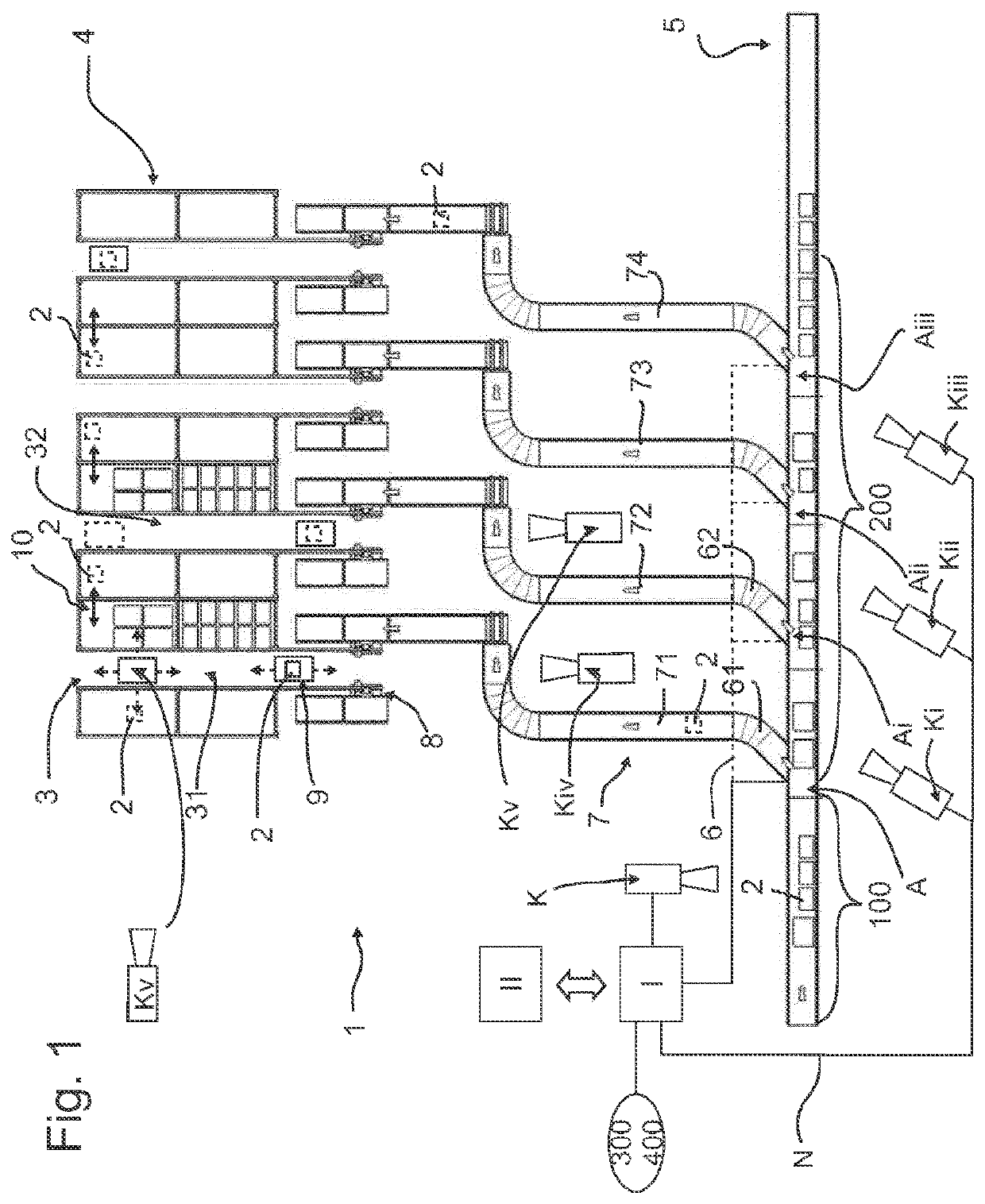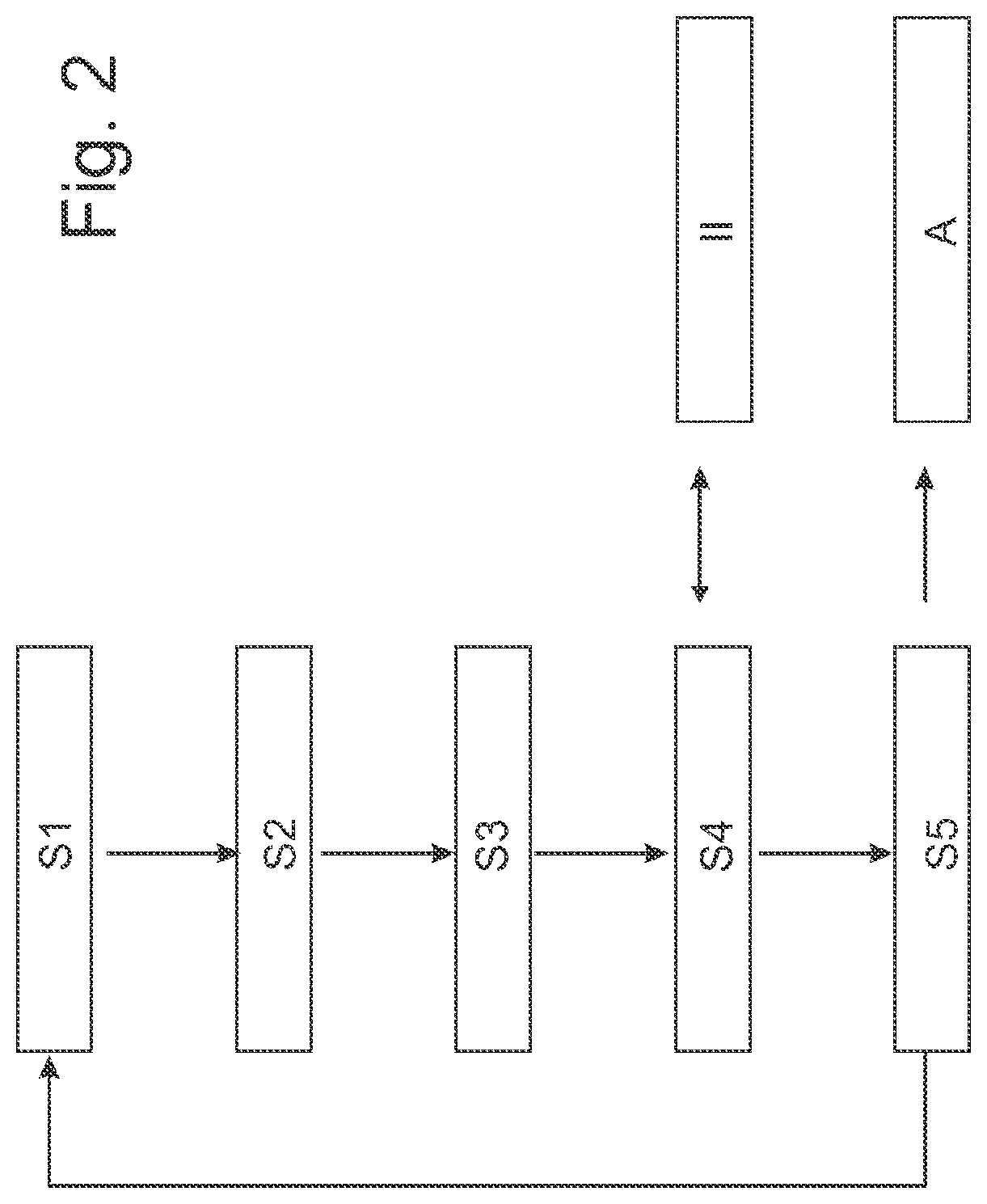Method and system for controlling the material flow of objects in a conveyor system of a real warehouse
- Summary
- Abstract
- Description
- Claims
- Application Information
AI Technical Summary
Benefits of technology
Problems solved by technology
Method used
Image
Examples
Embodiment Construction
[0031]FIG. 1 shows a plan view of a part of a central warehouse with a conveyor system 1 for placing packets 2 into storage in storage rack aisles 3 which are formed by storage racks 4 which are arranged in parallel with and opposite each other and have a plurality of levels.
[0032]The conveyor system 1 includes a distribution path 5 which conveys packets 2 inwards and outwards. Paths 7 into and out of storage are arranged between the distribution path 5 and the storage racks 4. These paths are connected to the distribution path 5 by introducing and discharging areas 6 and are connected to the storage rack aisles 3 via goods lifts 10. Adjacent paths 71 and 72, 73 . . . into and out of storage are arranged in parallel with each other.
[0033]The packets 2 are transported by the goods lifts 8 from the into-storage paths 7 into the rack levels of the storage racks 4 or from the rack levels to the out-of-storage paths 7. The packets 2 are transported within the rack levels of the storage r...
PUM
 Login to View More
Login to View More Abstract
Description
Claims
Application Information
 Login to View More
Login to View More - R&D
- Intellectual Property
- Life Sciences
- Materials
- Tech Scout
- Unparalleled Data Quality
- Higher Quality Content
- 60% Fewer Hallucinations
Browse by: Latest US Patents, China's latest patents, Technical Efficacy Thesaurus, Application Domain, Technology Topic, Popular Technical Reports.
© 2025 PatSnap. All rights reserved.Legal|Privacy policy|Modern Slavery Act Transparency Statement|Sitemap|About US| Contact US: help@patsnap.com


